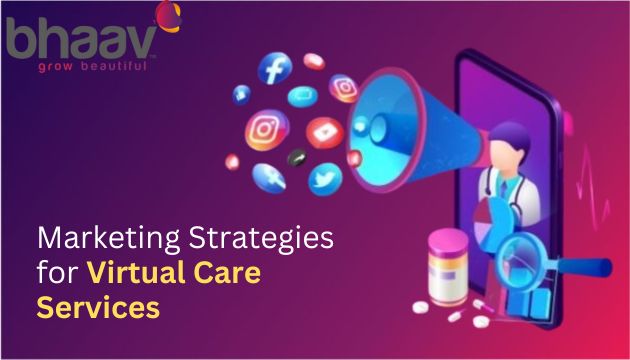
Marketing Strategies for Virtual Care Services
The impact of Virtual Care on healthcare is nothing short of seismic, as evidenced by Derek J. Baughman’s research article “Comparison of Quality Performance Measures for Patients Receiving In-Person vs Telemedicine Primary Care in a Large Integrated Health System,” published in JAMA Network, the impact of Virtual Care on the healthcare landscape is both significant and transformative. The ability to receive medical assistance from the comfort of one’s home not only signifies a shift in care delivery but also a profound transformation in how healthcare entities position themselves, particularly in the post-pandemic era. This shift not only alters how care is delivered but also demands a strategic repositioning for healthcare entities, particularly in the post-pandemic world.
Embracing the Digital Wave
Healthcare is rapidly embracing digitalization, recognizing its immense potential. Online consultations, for instance, are gaining traction due to their convenience and accessibility. However, the benefits extend beyond patients; providers leverage this digital wave to expand their reach and enhance services. By transitioning to platforms, workflows become more efficient, and healthcare accessibility improves for a wider demographic. Virtual Care isn’t a fad; it’s a transformative wave making healthcare more accessible and efficient for everyone.
Marketing in the Virtual Care Era
This transformation necessitates a shift in marketing practices. The post-pandemic market craves digitalized services, with healthcare consultations and offerings finding their home on online platforms. Patients are enthusiastic, and providers seize the opportunity to broaden their reach and streamline services.
Understanding Your Audience
Different needs exist based on age, location, and health conditions. Younger generations might be tech-savvy, while rural communities or those with mobility issues find virtual care invaluable. Certain health concerns also suit virtual check-ups perfectly.
But here’s the challenge: a lot of people aren’t sure if they can trust virtual visits. A global survey found that 75% of patients doubt diagnoses made this way. To tackle this, it’s vital to make it clear that virtual care is a service, not a physical product. This needs a creative strategy to explain the benefits clearly. Focus on the result – better access to healthcare and more convenience. Your messages should be strong and persuasive, encouraging people to switch from traditional in-person visits to getting help from home. Tailor your goals based on who you’re talking to, center your messages around the patient, and be open about any concerns to build trust and make virtual care more accepted.
Building Your Brand Identity
Once you understand your target audience, forge a robust brand identity. Define your unique value proposition, highlighting the distinct benefits of your service. User-friendliness is paramount, so ensure your website and app are easy to navigate and facilitate convenient appointment scheduling. Establishing trust and credibility
CHANNELS
is crucial, and you can achieve this by highlighting the qualifications of your healthcare providers, sharing positive testimonials, and showcasing any industry accreditations. By thoughtfully shaping your brand identity, you create the groundwork for an experience that is both trustworthy and user-friendly.
Leveraging Digital Marketing
Utilizing the internet is crucial for reaching potential patients. Explore these impactful channels to expand your reach:
SEO: Improve your website content and online presence to achieve higher search engine rankings for key terms like “virtual doctor” or “online therapy.”
PPC Ads: Create tailored ads for specific demographics and keywords, strategically placing them on search engines and social media platforms.
Content Marketing: Produce informative content such as blog posts, infographics, and videos to educate patients about the benefits of virtual care, establishing your expertise.
Social Media Marketing: Engage on platforms like Facebook, Instagram, and Twitter. Share valuable content, address inquiries, and run targeted ad campaigns for increased visibility.
Email Marketing: Build an email list and regularly send newsletters with updates, promotions, and educational materials to keep your audience informed and engaged.
These digital avenues allow you to effectively communicate the benefits of your virtual care services and connect with a broader audience.
Building Partnerships and Collaborations
Strategic partnerships hold immense value in amplifying your reach and credibility. Explore collaborations with diverse entities:
- Healthcare Organizations: Hospitals, clinics, and physician groups can extend virtual care services to their patient base.
- Community Organizations: Collaborate with community centers, social service agencies, and patient advocacy groups to reach underserved populations and address specific healthcare needs.
- Technology Companies: Partner with telemedicine specialists to foster innovation and enhance the user experience with cutting-edge solutions.
Through these collaborations, you leverage collective strengths, broaden your impact, and contribute to accessible and quality virtual care services.
Strategic partnerships present a valuable opportunity to amplify both your reach and credibility. Explore collaborative ventures with diverse entities such as healthcare organizations, including hospitals, clinics, and physician groups, to extend virtual care services to their patient base. Forge alliances with community organizations, such as community centers, social service agencies, and patient advocacy groups, to connect with underserved populations and address specific healthcare needs. Additionally, consider partnering with technology companies, especially those specializing in telehealth, to foster innovation and enhance the overall user experience through cutting-edge solutions. By establishing these strategic collaborations, you can leverage collective strengths, broaden your impact, and contribute to the advancement of accessible and quality virtual care services.
Focusing on Patient Engagement and Retention
Maintaining patient engagement is paramount once you’ve onboarded them into your care ecosystem. Prioritize exceptional customer service by offering swift responses to inquiries, hassle-free appointment scheduling, and a user-friendly experience. Personalize your approach by gathering patient data and preferences, enabling you to deliver tailored care and communication. Extend ongoing support through educational resources, follow-up calls, and remote monitoring, especially for chronic conditions. Actively seek patient feedback regularly to refine your services, addressing any concerns and continuously enhancing the overall patient experience. By incorporating these strategies, you can foster lasting engagement, build trust, and provide a comprehensive and personalized healthcare journey for your patients.
Embracing the current digital landscape, the future of virtual care is already here. Success in this realm hinges on the effective implementation of marketing strategies and a dedicated focus on engaging patients. It is crucial to comprehend your audience, establish trust, and deliver a seamless, personalized experience. As healthcare increasingly integrates technology, those who can adapt and innovate will lead in enhancing patient access and outcomes. By incorporating these additional insights, you can ensure that your virtual care service not only meets but exceeds expectations, distinguishing itself and attracting new patients in the evolving landscape of healthcare.
